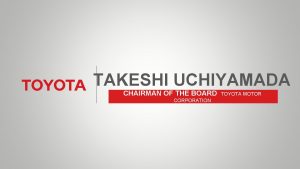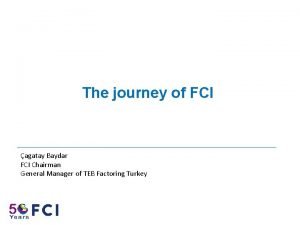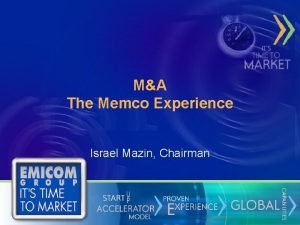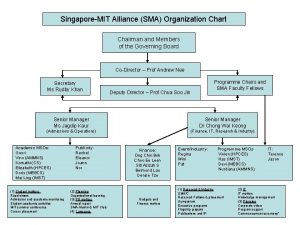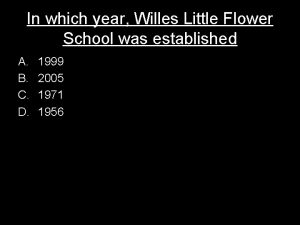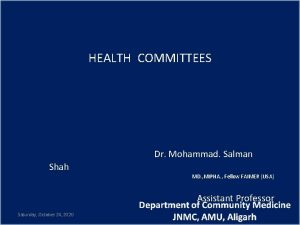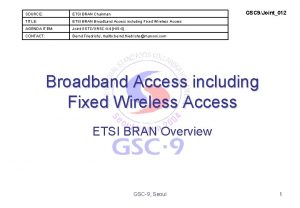SOURCE ETSI Chairman of the TC AT TITLE






- Slides: 6

SOURCE: ETSI, Chairman of the TC AT TITLE: Standardization activity on Rural areas communications access, terminals and home systems AGENDA ITEM: Joint GSTC/GSRC 4. 4 [HIS 4] CONTACT: Nuno Encarnação, mailto: at-chair@list. etsi. org, +41 32 327 5580 GSC 9/JOINT-009 Rural areas communications access, terminals and home systems General ETSI activities overview GSC-9, Seoul 1

Introduction q Rural areas have 2 main characteristics Ø Long distance to main centres Ø Low density of users with a wide spectrum of requests q Most rural communications systems can be classified Ø Access systems, typically based on radio • Due to the large costs of wired systems • Lower costs and increasing capacity of present radio systems Ø Terminals and Home systems, playing increasingly a central role in rural areas to support • Telecommunications Universal Service (e. g. voice telephony) • A number of available video services (TV, other information) • Remote assistance in different areas GSC-9, Seoul 2

Terminals and Home Systems q Terminals and Home systems in rural areas Ø The long distances to (non-Telecom) service centres create an additional justification for the use of (tele-) communication systems, • e. g. emergency, medical, administration, tele-banking, cultural, social, commercial, newspapers, white goods, fire, police services used from remote sites Ø Rural Terminals and Home systems • may (or not) need less broadband applications than business areas in urban centres • but have a wider range of applications and urgent user’s social requests (service centres are farther than in urban areas) GSC-9, Seoul 3

Home Networks, NGN @ Home q General information Ø Working Group AT-N works in “NGN@Home” Ø Wide scope initial work plan collects information q New services and applications @ Home Ø Technology independent solutions Ø Home Network elements to inter-operate • among them and with Telecom Networks & Services Ø All technologies (wire, wireless, access, home) beneficiate to coexist and be used at the best GSC-9, Seoul 4

Home environment common items q Backwards compatibility with legacy systems Ø Backwards compatibility, support of legacy terminals features [TR 101 973 series] Ø Maximise the usage of harmonised or converging solutions, e. g. interface offered for POTS [ES 201 970] q Future oriented convergence with NGNs’ evolution Ø Improve inter-working among base technologies Ø Facilitate differentiation & universality of services & contents q Consider horizontal aspects Ø Ø Ø Regulatory framework on services & networks, terminals, etc Interoperability among different solutions High Qo. S [Quality of Service], e. g. for Voice [EG 201 050] Support to emergency situations Security/ Data protection, Lawful Interception EMC, safety GSC-9, Seoul 5

Work in the Home environment q TR 102 160 series (in development) Ø Will collect the maximum information q Co-operation with CENELEC, ITU-T & others Ø exist and is being intensified Ø E. g. Smart House aspects is one focus q Narrow Band Broad Band web sites Ø Offer a central point for information in these areas q Information on (wire-line) Access & Terminals Ø Common and general aspects: • www. etsi. org/at Ø Specific technology aspects: • x. DSL, Broad. Band. Cable. Com, Power Line – Note: ETSI deliverables can be downloaded free of charge from » http: //webapp. etsi. org/Work. Program/Expert/Query. Form. asp GSC-9, Seoul 6
